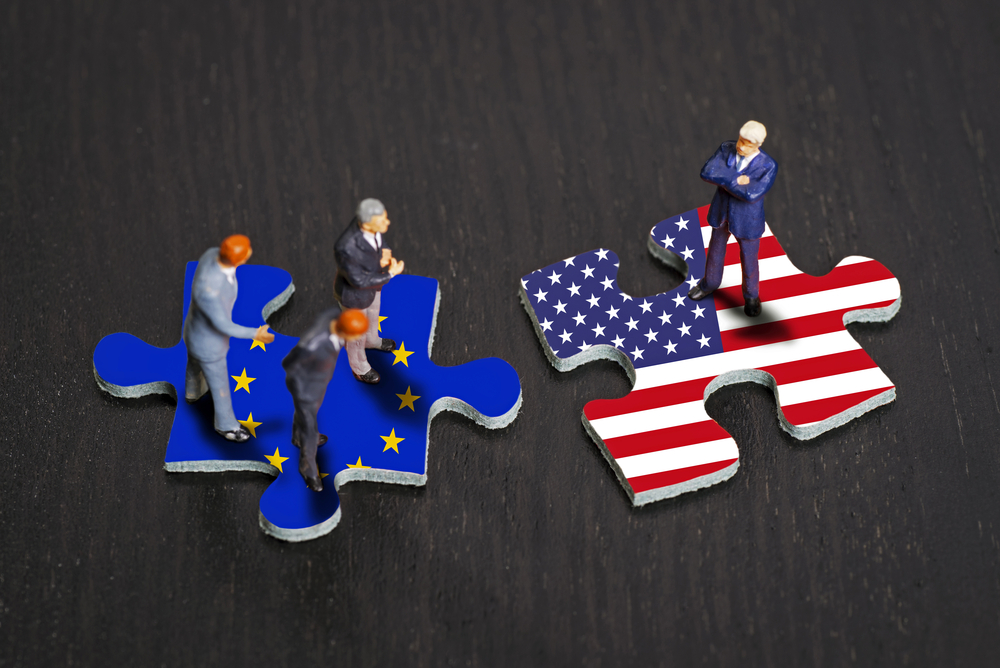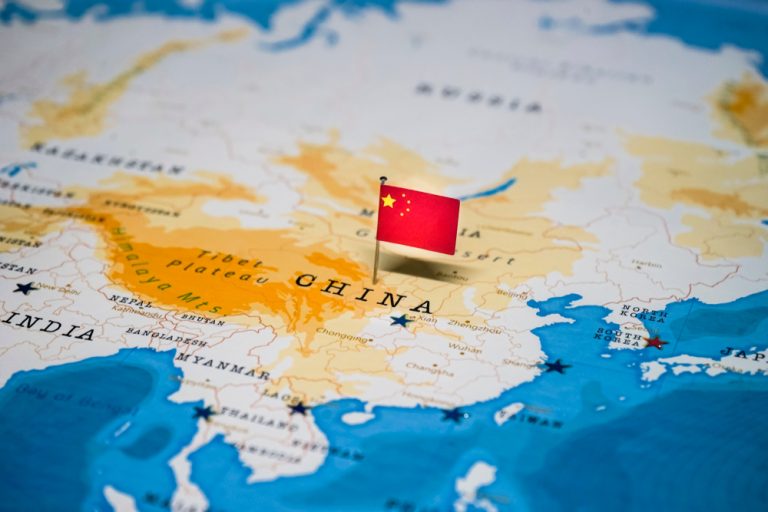
Industrial migration along the Europe – US route as part of the new global geopolitics
Almost any geopolitical event can have a “double bottom,” and behind the obvious interests of the opposing sides may hide less obvious, but no less important motives. Russia’s invasion of Ukraine is no exception. On the surface, there is a confrontation between Western countries, led by the United States, and Vladimir Putin’s new imperial ambitions. It is also easy to see the more global confrontation between the West and China, which is in a hidden alliance with Russia. However, the issue of US control over its allies in the EU turns out to be just as important. Back in the summer of 2022, when Europe was facing a multi-year energy crisis and economic downturn, many began to openly say that the US deliberately sought such a scenario against the backdrop of the Ukrainian conflict. According to many critical experts, the goal was to put Europe in a subservient position, as it was vital for the Americans to create a situation where they would be a rich metropolis against the background of their “backward” European countries.
To accelerate the impoverishment of Europe and turn it into a “second-rate region,” the US provoked the migration of major European enterprises to its territory. There was no real confirmation of this theory, but The Wall Street Journal published a detailed article back in the fall about big European businessmen moving their production to the US. Among the industries that chose such a path were the automotive industry, machine building and chemical production. For example, the Dutch company OCI N.V., which produces agricultural fertilizers made of ammonia, urea and other substances that ensure the efficiency of agriculture, decided to move to Texas. Among others, Danish jewelry brand Pandora, automobile concern Volkswagen, European division of electric car manufacturer Tesla, German BASF, Norwegian company Yara International, Austrian producer of steel equipment and materials RHI and metallurgical giant ArcelorMittal decided to change the location of their production facilities. The US government openly stimulated the move with the Inflation Reduction Act, which gave foreign businesses generous incentives when they acquired “American citizenship”.

However, the main reason for the flight of industrialists from Europe was rather an indirect policy of Washington. Joe Biden insisted quite firmly on the EU’s participation in the economic war with Moscow, which for the Europeans was expressed in the rejection of Russian gas and oil. This policy led to an energy crisis in Europe and made the cost of electricity, fuel, and raw materials for many industries unaffordable, undermining their profitability. Gas prices even for European private consumers went up 2-4 times in the fall of 2022 compared to 2021, and electricity prices rose tenfold. But while households were able to get into austerity mode in this situation, businesses were not ready for such “tolerance“. Against the backdrop of the crisis, from September to December the EU lost about 10% of steel production, and fertilizer production decreased by 50%. There were less serious declines in non-ferrous metallurgy, the chemical industry and glass production. All these industries were united by the fact that energy was an important component of the cost of their products. For example, in Germany it is 26% in metallurgy, 19% in chemical production, 18% in glass production and 15% in the construction materials industry. In summer production in the EU decreased by 2.4% due to energy problems, inflation, consequences of COVID-19 and many other various factors.
At the first stage, it was the United States with its LNG that was to be the savior of the European economy. But the price and regularity of supplies of this resource demonstrated that this alternative was a dubious panacea for European industry. In this situation, some companies decided to hold on and wait for help from European governments, but most began to consider the option of relocation. Moving to China was not suitable for many companies for political reasons, developing Asian countries were doubtful because of the low level of skills of local specialists and many other reasons. In this situation, as Biden had planned, almost all of them chose the US as their destination. To be completely frank, the first signs that industry is gradually moving to North America were there even before the current energy crisis. The US set out to bring manufacturing back home after Donald Trump was elected, and his main opponent, Biden, was remarkably unanimous on this issue. The US had the obvious advantage of a unified and more homogeneous market, and the absence of a language barrier within the economy. The European market, despite the best efforts of officials in Brussels, remained fragmented and had a diversity of legal frameworks, which made it difficult for business to operate and made Europe an “appealing victim.“
Since the outbreak of the war in Ukraine in February 2022, these processes have only accelerated. It has only been a year since the beginning of the energy crisis in Europe, but, as we said above, dozens of businesses are about to move, and the pace of this kind of “migration” will increase every month, and entire European industries may settle in the United States. Of course, there are many problems for business in the US: expensive management personnel, shortage of skilled workers and engineers, unpopularity of industrial work for the population. However, any such problems tend to be resolved over time, especially since the political wave of US leadership toward re-industrialization should not be doubted. Both Democrats and Republicans have decided to ensure a new flowering of American industry, without which geopolitical competition with China is not possible. There is no doubt that even after losing some of its industrial potential, Europe will remain an industrialized region, and it is premature to speak of an immediate collapse of its economy. But it can be considered the first sure step in the loss of leadership and Europe’s withdrawal to the historical and economic periphery.

To prevent these long-term processes, the authorities of the EU and leading European countries lack the political will that Trump and Biden have in place. Germany, in fact, has resigned itself to deindustrialization, while France is resisting it with mixed success, constantly experiencing demonstrable difficulties along the way. In public, French President Emmanuel Macron has shown “determination” and made a very bellicose statement that US industrial policy is “super-aggressive” and splits the unity of the West, and that all steps taken must be coordinated with the authorities of European states. But Germany not only failed to support him, but also expressed concern about the threat of a trade war with the United States. Peace-loving Germans suggested confining the talks to the subsidies for the European industry and not quarrel with Washington. In the end, the effect of the French president’s speech was limited to working for his constituents inside the country, for whom talk of reindustrialization and new industrial jobs became a kind of “sacred cow.”
Seeing that they are doing well, the US authorities are increasingly taking advantage of the EU crisis and luring European businesses to them. Representatives from Michigan, Georgia, Ohio and West Virginia kicked off 2023 with a tour of European countries. In addition, representatives of states also attended the forum in Davos, where there were many representatives of European companies. They are generously promising European companies special terms and big subsidies, in addition to federal subsidies, for moving their production facilities to the United States. The date of the trip is no coincidence, as the “Inflation Reduction Act,” which gives $370 billion in subsidies to green companies with manufacturing in North America, finally went into effect on January 1. In reality, it is clear that “green policies” are becoming a thing of the past and such status will be given to any business whose relocation to the US would be beneficial. Businesses are already beginning to respond to these enticing US appeals. BMW, for example, will produce electric cars in South Carolina, and Norwegian battery maker Freyr will move its production to Georgia. In addition to Europeans, South Korean solar panel manufacturers are also moving to America.
Brussels is getting more and more indignant about how the US is profiting from Europe’s troubles, but there is no reaction to this, as before. Europe is already being exploited as a real colony. Last year, the US oil sector made more than $200 billion in profits from exports to Europe, squeezing out Russian competitors. The US military-industrial complex is also making money from replenishing European arms stocks wasted in Ukraine, but this is not enough, and European industry remains the main target. In Davos, Macron again complained to West Virginia Senator Joe Manchin that the US was hurting the French economy. Manchin mockingly suggested that Europeans should be happy that the US is not yet imposing high tariffs on imports of European automobile exports. Under such circumstances, Macron and Scholz must prepare their own subsidies to somehow justify their inaction. But Washington is not at all bothered by these chaotic actions and some US politicians are even urging the Europeans to enter a trade war as soon as possible. The US does not consider Europe a real competitor and such a confrontation would only loosen the hands of American lobbyists against their opponents in the Old World. Americans will only see Europe’s economic losses as collateral and inevitable damage in the key confrontation with China and Russia. After all, the European colony must pay for its willfulness with the benefit of the American metropolis.

